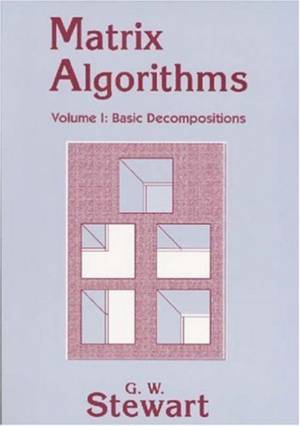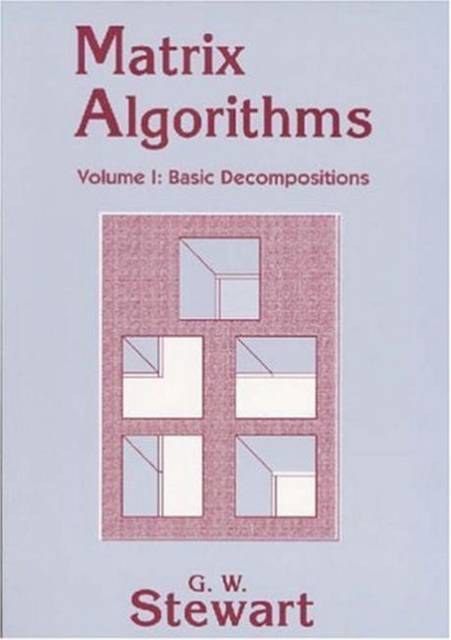
- Afhalen na 1 uur in een winkel met voorraad
- Gratis thuislevering in België vanaf € 30
- Ruim aanbod met 7 miljoen producten
- Afhalen na 1 uur in een winkel met voorraad
- Gratis thuislevering in België vanaf € 30
- Ruim aanbod met 7 miljoen producten
Zoeken
€ 50,45
+ 100 punten
Omschrijving
This thorough, concise, and superbly written volume is the first in a self-contained five-volume series devoted to matrix algorithms. It focuses on the computation of matrix decompositions - the factorization of matrices into products of similar ones. The first two chapters provide the required background from mathematics and computer science needed to work effectively in matrix computations. The remaining chapters are devoted to the computation and applications of the LU and QR decompositions. The series is aimed at the nonspecialist who needs more than black-box proficiency with matrix computations. A certain knowledge of elementary analysis and linear algebra is assumed, as well as a reasonable amount of programming experience. The guiding principle, that if something is worth explaining, it is worth explaining fully, has necessarily restricted the scope of the series, but the selection of topics should give the reader a sound basis for further study.
Specificaties
Betrokkenen
- Auteur(s):
- Uitgeverij:
Inhoud
- Aantal bladzijden:
- 184
- Taal:
- Engels
Eigenschappen
- Productcode (EAN):
- 9780898714142
- Verschijningsdatum:
- 1/08/1998
- Uitvoering:
- Paperback
- Formaat:
- Trade paperback (VS)
- Afmetingen:
- 152 mm x 228 mm
- Gewicht:
- 820 g

Alleen bij Standaard Boekhandel
+ 100 punten op je klantenkaart van Standaard Boekhandel
Beoordelingen
We publiceren alleen reviews die voldoen aan de voorwaarden voor reviews. Bekijk onze voorwaarden voor reviews.











